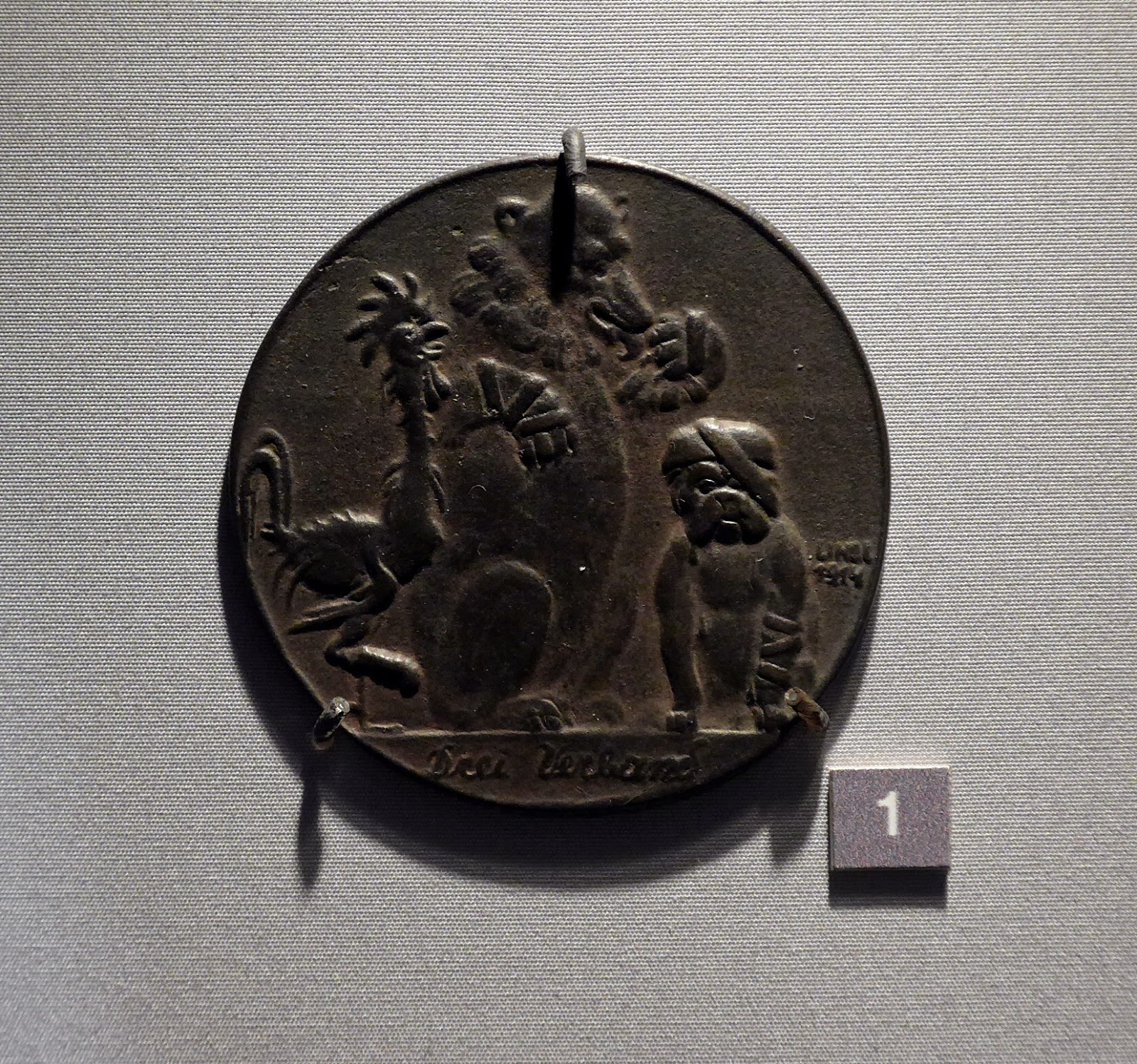I'm not sure what I really think (thought) about medals.
I've never won one.
I did, perhaps naively, think that they were awarded for achievement,
like for coming first or for an act of bravery.
I had these preconceptions challenged at the British Museum when I saw the exhibition,
This is an exhibition of medals.
These medals were made by artists,
most of whom lived and worked in Germany during the war.
Medals made to tell stories of and tell how they felt about the conflict.
Shown below is the enemy, wounded in defeat.
Russia, the bear with bandaged paws.
Britain, a bulldog, head and leg bandaged.
France, the cockerel limping with strapped up claw.
 |
| France, Russia and Britain. Hans Lindl, Germany, 1914 |
Refugees displaced during the invasion of East Prussia by the Russians.
The seven month invasion displaced one million people.
 |
| Refugees, Ludwig Gies, Germany, 1915 |
This medal was made to commemorate a mistaken claim by a German airship commander
that he had bombed London, west of Tower Bridge.
The reality was, mistaking reservoirs for the River Thames, he had bombed the Lea Valley.
Nevertheless, lives were lost in Walthamstow and Leyton.
 |
| Zeppelins over London, Fritz Eue, Germany, 1915 |
This medal shows the sinking of the Lusitania in 1915,
whilst travelling from New York to Liverpool,
by a German U-boat submarine, with the loss of over a thousand lives.
whilst travelling from New York to Liverpool,
by a German U-boat submarine, with the loss of over a thousand lives.
 |
| Lusitania, Ludwig Gies, Germany, 1915 |
Here a British medal commemorating the signing of the Treaty of Versailles.
For the allies, this marked peace and justice.
 |
| Treaty of Versailles, Elkington & Co, UK, 1919 |
The Great War ends.
Medals of 'Pax' Peace made in Germany and Victory in France.
Medals of 'Pax' Peace made in Germany and Victory in France.
 |
| Left; Pax (Peace), Erzsebet Esseo, Germany, 1919 Right: Victory, Louis Patriarche, France, 1919 |
The British Museum acquired most of these medals during the First World War.
Copies of them were displayed in the Victoria & Albert Museum during the war,
the exhibition becoming part of the propaganda against Germany.
During the war the British Museum was closed,
sand-bags out to protect the collections.
Open today.
As for my feelings about medals.
They have helped me empathise,
understand more of the impact of war on civilians on all sides.
The medal I find most powerful for its depiction of grief and loss is
'Pax' 1919
Peace.
Peace that costs, that is painful, a look of devastation.
Made at the end of the war it reflects
the experience of so many individuals on both sides, devastated by the First World War.
is on at The British Museum
until 23rd November.
Details on the British Museum website here.
Details on the British Museum website here.


It sounds like a very interesting and thought provoking exhibition. xx
ReplyDeleteIt was thought provoking. Told the story of World War One in a new way for me.
Delete